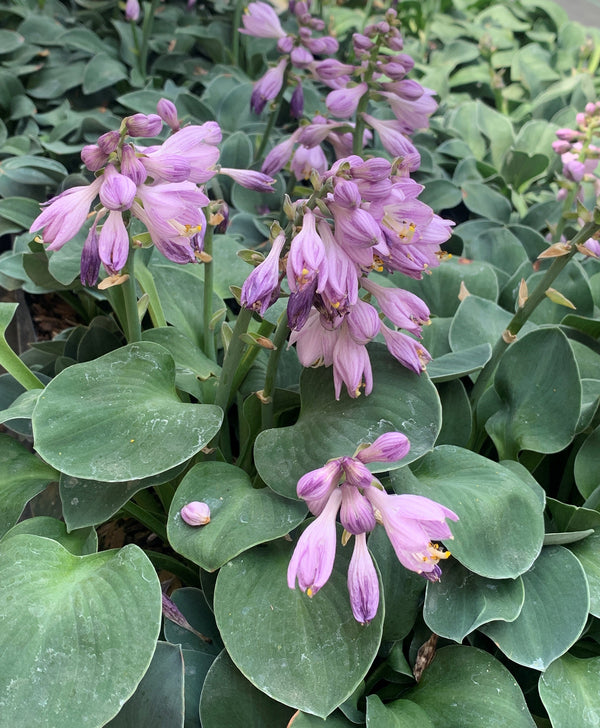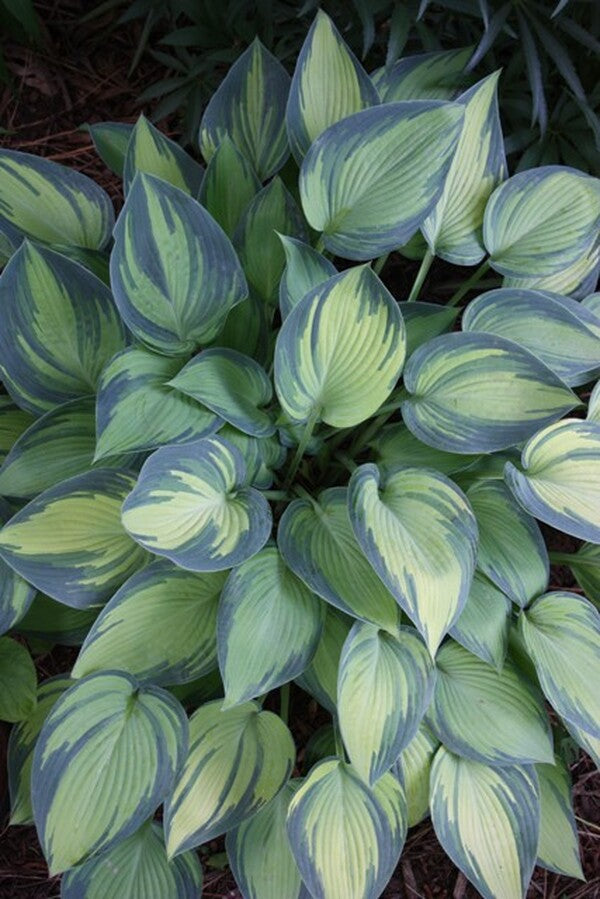The following article is part of a series geared toward entry-level gardeners. For deep dives into a variety of perennials that we have sold over the decades, visit our archive of in-depth perennial articles written by Tony Avent, Dr. Patrick McMillan, and other Plant Delights and JLBG experts. We also have transcripts of our Gardening Unplugged videos, recorded during our Open Nursery and Garden Days, that have great information for gardeners of all experience levels.
Gardening is a rewarding endeavor that brings us closer to nature and allows us to create beauty right in our own backyard. For beginners, starting with plants that are easy to care for can provide a solid foundation for a successful gardening journey. Hostas, often referred to as the "queen of the shade garden," are a wonderful choice for those new to gardening. Their lush foliage, diverse color patterns, and low-maintenance requirements make them a popular choice among gardeners of all levels. In this guide, we'll explore how to choose the right hosta varieties and provide essential tips for planting and maintaining these versatile plants.
Choosing the Right Hosta Varieties
Hostas come in a wide range of sizes, shapes, and colors, making them a versatile addition to any garden. For beginners, it's important to select varieties that are known for their adaptability, ease of care, and resilience. Here are five excellent choices that are particularly well-suited for those new to gardening.
Hosta 'Blue Mouse Ears'
Hosta 'Blue Mouse Ears'
This petite hosta features small, round leaves that resemble mouse ears, hence its name. It's a miniature variety that only reaches about 6-8 inches in height. The blue-green foliage adds a cool and calming element to your garden, making it an ideal choice for container gardens, edging, or rock gardens.
Hosta 'June'
Hosta 'June'
'June' is a classic hosta known for its striking variegated leaves. The leaves are a mix of vibrant gold and blue-green, creating a stunning contrast that brightens up shaded areas. This medium-sized hosta reaches about 12-15 inches in height and is great for adding a pop of color to your garden beds.
Hosta 'Pocketful of Sunshine' PP 23,709
Hosta 'Pocketful of Sunshine'
As the name suggests, this hosta variety brings a burst of sunshine to your garden. With its golden-yellow foliage, 'Pocketful of Sunshine' can instantly light up shady corners. It's a compact hosta, growing up to 10 inches in height, making it suitable for borders and containers.
Hosta 'Stained Glass'
Hosta 'Stained Glass'
'Stained Glass' is a larger hosta that reaches heights of 18-20 inches. Its leaves are a blend of bright gold and dark green, resembling stained glass windows. This variety stands out as a focal point in your garden and pairs well with other shade-loving plants.
Hosta 'Coast to Coast' PP 26,469
Hosta 'Coast to Coast'
If you're looking for a hosta with impressive size and presence, 'Coast to Coast' is a great choice. It can grow up to 30 inches tall, making it a commanding presence in any garden. The leaves have a unique blue-green color with a wavy edge, adding texture to your landscape.
Planting Your Hostas
Now that you've chosen the perfect hosta varieties for your garden, it's time to get your hands dirty and start planting. Follow these steps to ensure a successful planting process:
Choose the Right Location
Hostas thrive in partial to full shade, making them an excellent choice for areas of your garden that receive dappled sunlight or are shaded for most of the day. Avoid planting them in direct sunlight, as this can scorch their delicate leaves.
Prepare the Soil
Hostas prefer moist, well-draining soil that is rich in organic matter. Before planting, amend the soil with compost or well-rotted manure to improve its texture and fertility.
Dig the Hole
Dig a hole that is slightly larger than the hosta's root ball. Make sure the hole is deep enough to accommodate the plant's roots without crowding them.
Plant the Hosta
Gently remove the hosta from its container and loosen the roots. Place the plant in the hole at the same depth it was growing in the container. Fill in the hole with soil and pat it down gently to eliminate air pockets.
Water Thoroughly
After planting, water the hosta thoroughly to help settle the soil and encourage root establishment. Keep the soil consistently moist, especially during the plant's first growing season.
Maintaining Your Hostas
One of the reasons hostas are favored by beginners is their low-maintenance nature. However, a little care goes a long way in ensuring your hostas remain healthy and vibrant.
Watering
Hostas appreciate consistent moisture, so water them regularly, especially during dry spells. Use a soaker hose or drip irrigation to keep the foliage dry and prevent diseases.
Mulching
Apply a layer of organic mulch around the base of your hostas to help retain soil moisture, suppress weeds, and regulate soil temperature.
Fertilizing
Hostas benefit from an annual application of balanced, slow-release fertilizer in the spring as new growth emerges. Avoid excessive use of nitrogen-rich fertilizers, as they can lead to more foliage growth at the expense of flower development.
Dividing
Over time, hostas can become crowded and their growth may slow down. Dividing them every 3-5 years in the early spring can rejuvenate the plants and promote healthy growth.
Pest and Disease Management
While hostas are relatively pest-resistant, they can occasionally be affected by slugs, snails, and foliar diseases. Regularly inspect your plants and take necessary measures to control pests and maintain a healthy garden environment.
Winter Care
As winter approaches, cut back the dead foliage to the ground. Applying a layer of mulch over the root zone can help protect the plant from harsh winter conditions.
Hostas are a fantastic choice for beginning gardeners looking to add beauty and elegance to their landscape without the stress of high-maintenance care. With a variety of sizes, colors, and patterns to choose from, these shade-loving plants can easily become the star of your garden. Remember to choose varieties that suit your gardening preferences and climate, and follow the basic planting and maintenance guidelines provided in this guide. With a little effort and a lot of appreciation for nature's beauty, your hostas will flourish and become a delightful addition to your outdoor haven.

